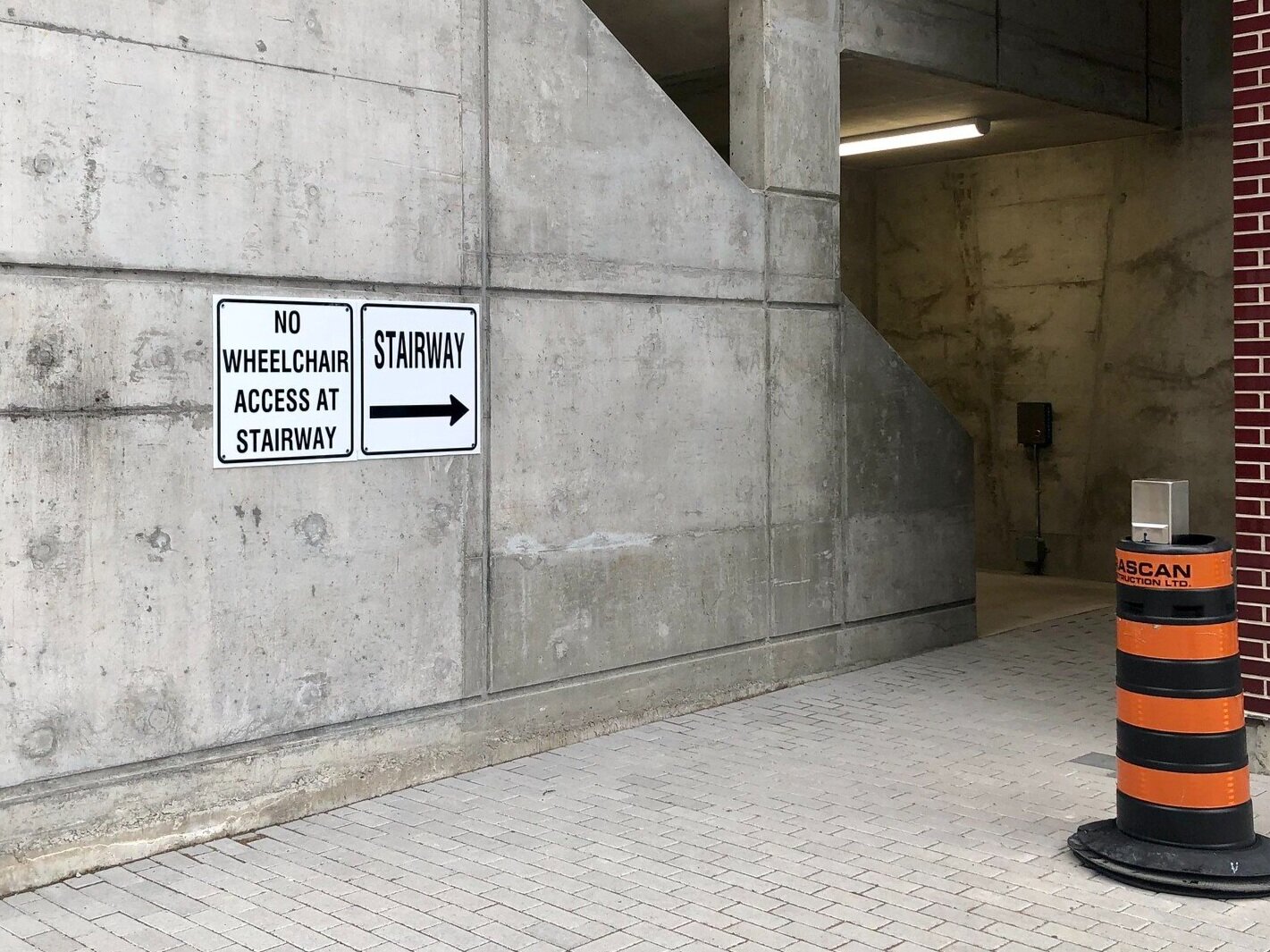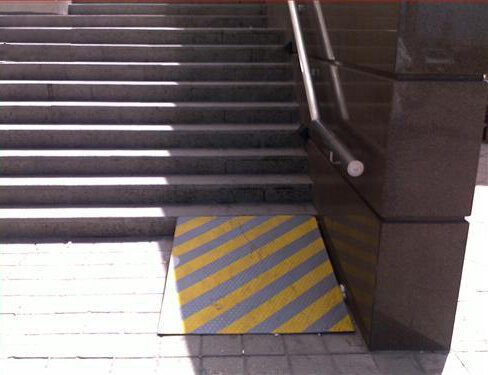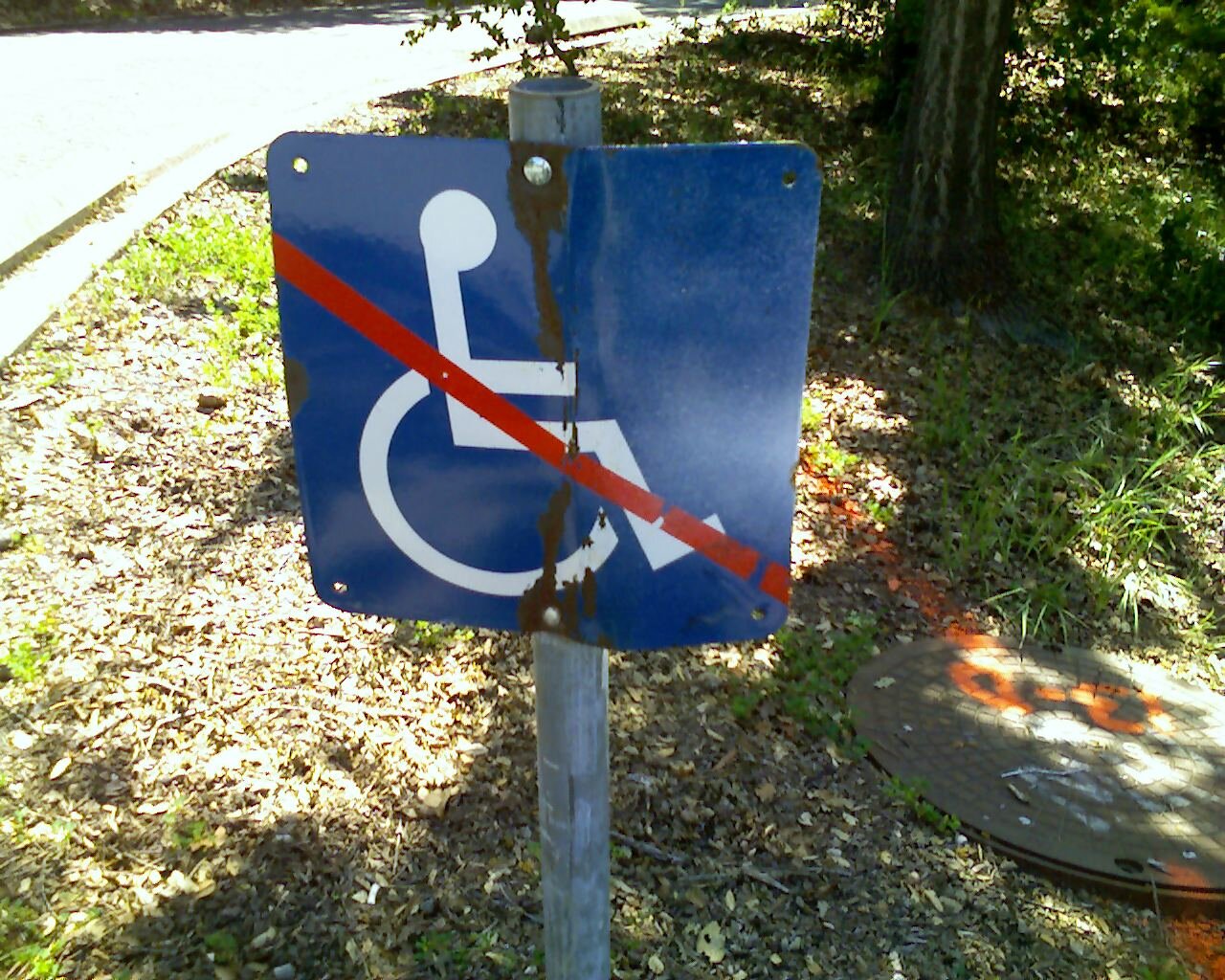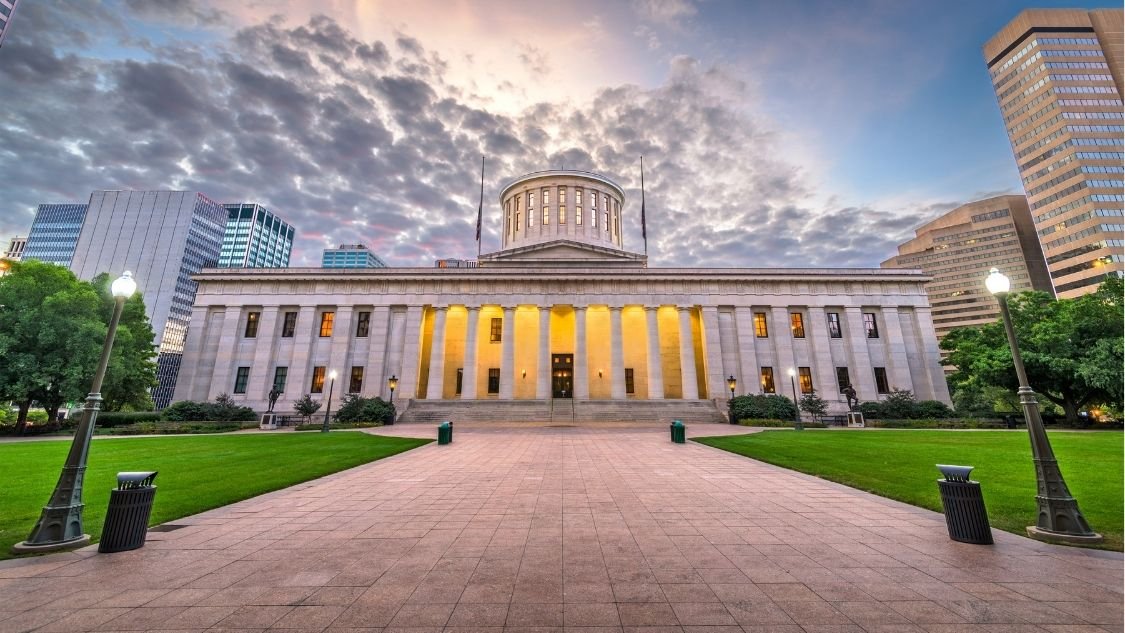Want to build a strong town? Make it work for people with disabilities.
Allowing a developer to close sidewalks for a two-year buildout destroys ADA and all pedestrian access. Photo by Steve Wright
The Americans with Disabilities Act (ADA) hasn’t guaranteed accessibility and inclusion for people with disabilities. Even before the pandemic, public spending to remove barriers for wheelchair users and others was woefully inadequate. City and county budgets are routinely approved with zero dollars dedicated to removing obstacles and downright dangerous barriers. Spending on capital improvement and public works projects is rarely dedicated to removing barriers and enhancing accessibility.
But especially in times of prosperity and peril, people with disabilities have been left behind.
The stimulus bill is delivering billions to U.S. cities. As we try to rebound, significant spending should be dedicated to better sidewalks, crosswalks, ramps, transit, parks, housing, education and job access—for people with a wide range of disabilities. Money must be focused on outreach, design, construction, and maintenance that creates universal design and inclusive mobility.
The beauty of this approach is that what works for a person with a disability works for all. A crosswalk that has proper timing, markings and is free of obstructions is also safe and useful for children, families and the elderly. More curb ramps make life easier for everyone from delivery drivers rolling hand trucks, to office workers with rolling brief cases, to those who walk in high heels.
An accessible built environment is wise spending, because it takes existing urban density, walkability, and mixed-use development and makes it even more attractive for people of all abilities to immerse in the community and age in place. On the flip side, passively pretending that accessibility issues will magically take care of themselves—without earmarked dollars for accessibility in public works projects—condemns municipalities to failure.
There has been a lot of attention paid to environmental justice—reversing the ills urban planning created when poor, predominantly Black neighborhoods were razed for highways or other projects, erasing home ownership and wealth. Environmental justice must also address America’s history of excluding people with disabilities from public pools, jury boxes, schools, and dozens of other basic government facilities. This discrimination lasted well into the end of the 20th century.
Images via Flickr [1] [2] [3].
Barriers remain in many forms. For example, a brand-new building with steps at the main entrance discriminates against people with disabilities who must enter separately via a ramp off to the side. Many subway and elevated train systems cannot be accessed by wheelchair users.
Physical barriers like these have caused unrivaled poverty for people with disabilities, who are far more likely to experience unemployment and underemployment than those without a disability. On top of that, less than 1% of housing stock is move-in ready for people who use wheelchairs for mobility. Do the math. If you make the least amount of money in the nation, you probably can’t pay for $100,000 in renovations to make your home accessible, safe and livable.
Cool wheelchair access wayfinding. It directs people to accessible entrance. Photo by Steve Wright
Ask any person with a disability. They will tell you their body is not what limits them. Endless broken sidewalks, buses with inoperable lifts, transit systems with up or down stairs but no elevators, parks without paved trails, pools without lifts, homes without zero-step entrances—those are the things that are limiting.
All those things could be fixed by spending a fraction of the stimulus funds coming to American cities.
Many cities will be making things more pedestrian-friendly, adding open space, reinventing the built environment to cope with social distancing and needs that became obvious during the pandemic. They should invest simultaneously in inclusion, equity and access in the city core for people with disabilities, which pays dividends in the form of precious tax dollars.
People with disabilities are not served by the suburban development pattern, by roads to nowhere, by endless annexation and horizontal growth. They are served by compact, mixed-use, transit-rich, old growth areas with main libraries, central parks, downtown universities, medical centers in the center of town, and main street services.
Best of all, these kinds of investments bring in a huge bang for the buck. If you design, after consulting people with a wide range of disabilities, a barrier-free public realm, then you have just ensured your civic assets are 100% accessible by all your residents regardless of age, income, color, or ability.
Increasing access—for example, via common sense removal of sign posts, junction boxes and obstacles that block sidewalks—makes your town stronger.
Want to make your town stronger still? Stop looking at ADA compliance with contempt and at barrier-removal as some loss-leader, special interest spending. Inclusive and equitable cities are places where innovation is supported, brilliant things are invented, jobs are created, and creative people thrive on urban amenities.
Boardwalks can protect sensitive ecosystems while allowing access for people of all mobility abilities. Photo by Steve Wright.
People with disabilities are resourceful, brilliant, and starving for that first job and better work. Sending a monthly check to a disabled person—which does not cover the cost of monthly rent for a one-bedroom unit in the vast majority of American cities—is patronizing. Spending on wider sidewalks, safer crosswalks, and inclusive transit modes will not only make a better city for all, but it also will put people with disabilities to work.
What could possibly be a better investment than converting a person on assistance into a proud, productive taxpayer?
How could municipal spending deliver more bang for the buck than giving a person with a disability the tools to live independently?
What produces better metrics than city infrastructure that allows an unemployed person to become a productive earner who pays back into the system, so there are funds to keep the safety net in place?
What policy can produce more widespread results than building more inclusive cities so the next generation of people with disabilities can enjoy equitable access to education, jobs, and civic life?
About the Author
Steve Wright (Twitter: @stevewright64) is a marketing executive with 40 years of experience in communications, urban design, town planning, journalism, business development, inclusive mobility and universal design. He lives in Miami’s Little Havana with his wife Heidi Johnson-Wright, who uses a wheelchair for mobility and is one of the most-respected Americans with Disabilities Act experts in the nation. Visit his urban design and accessibility blog at: http://urbantravelandaccessibility.blogspot.com











It’s easy to get angry or check out when faced with your place’s continued decline. That doesn’t mean you should stop fighting for it.